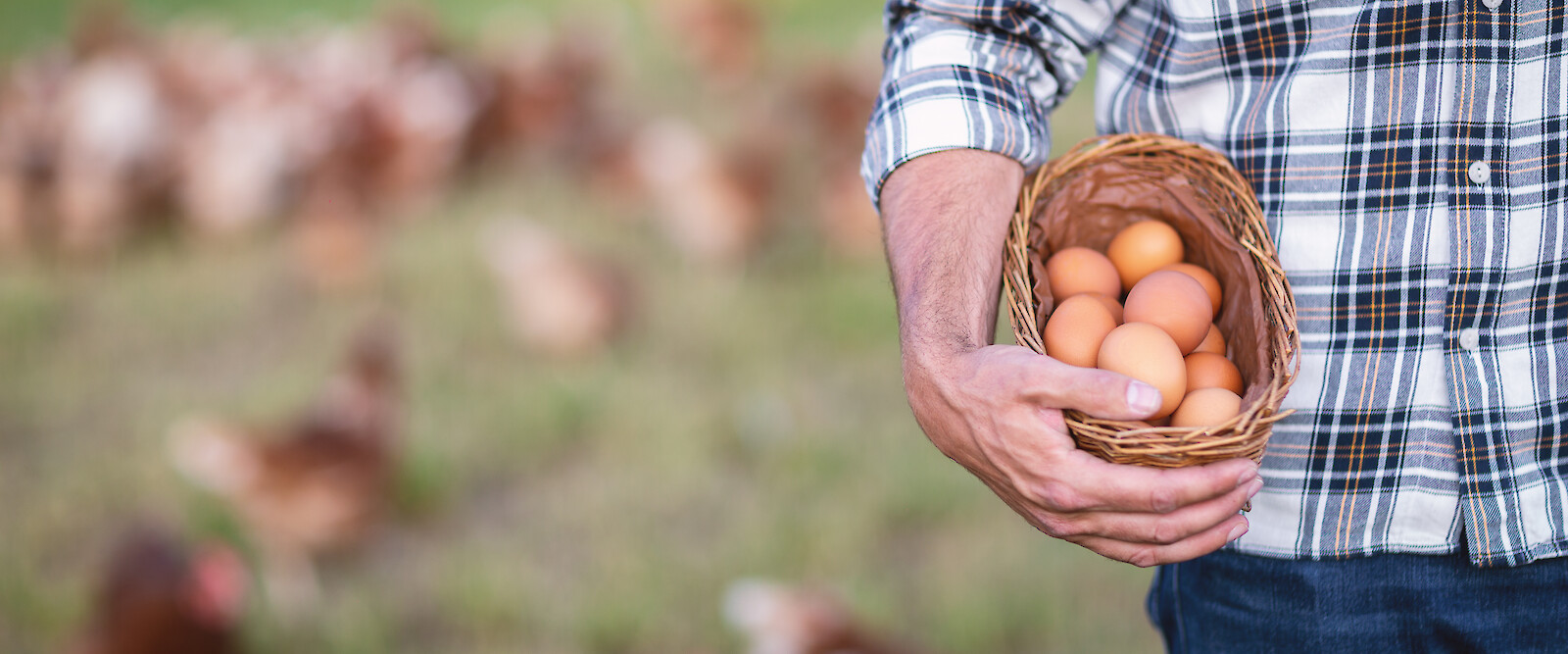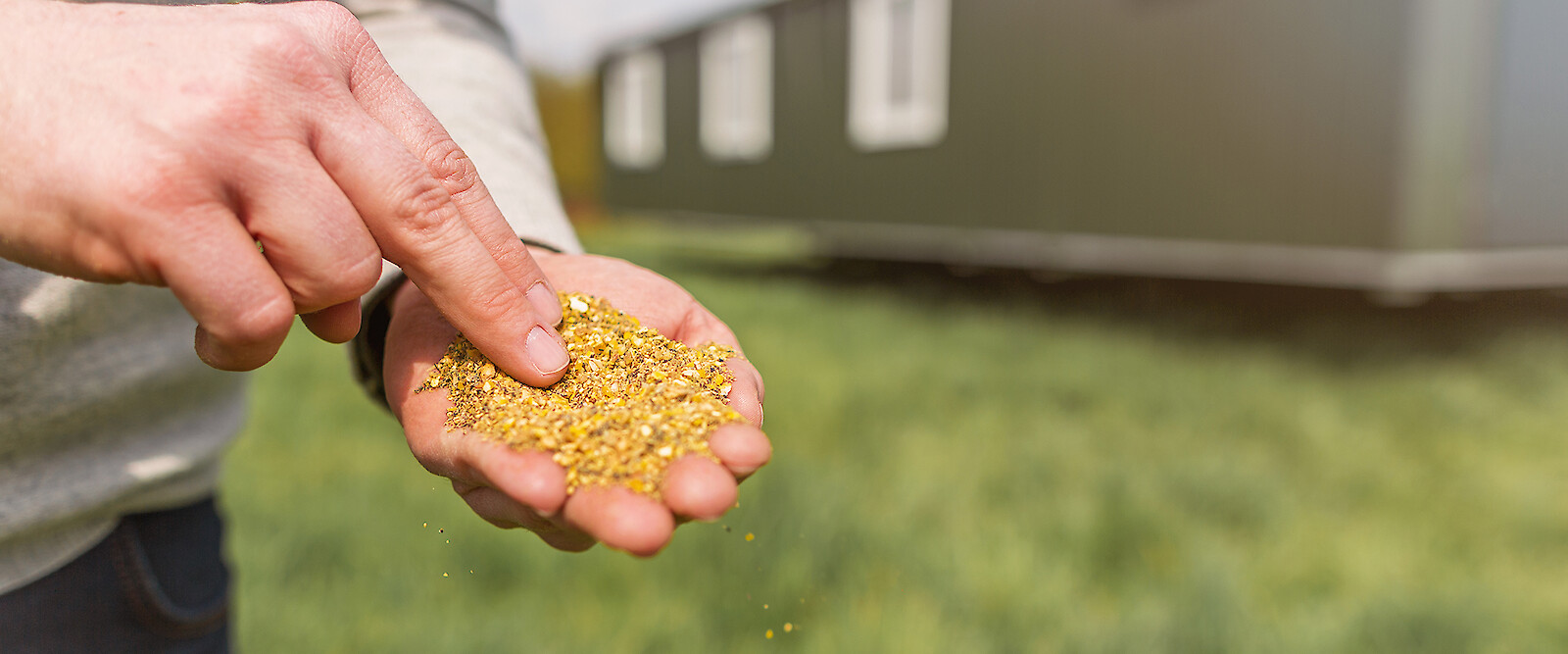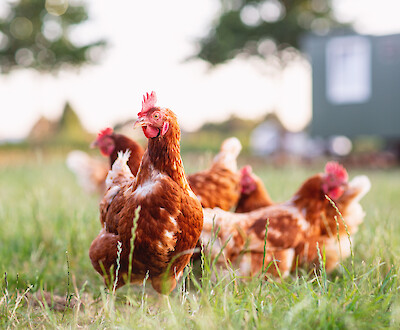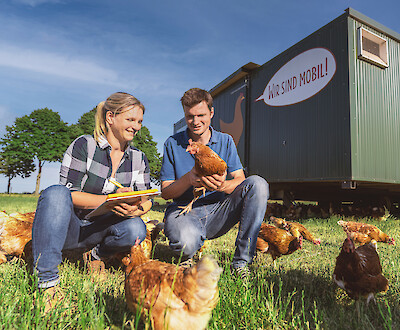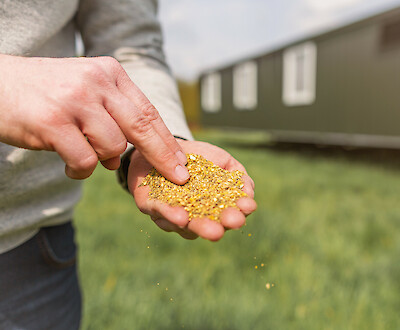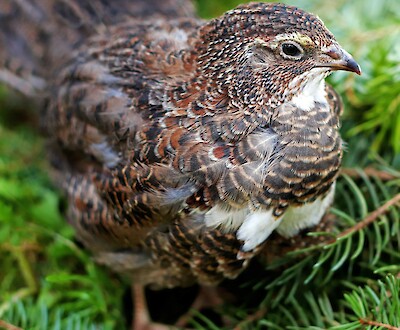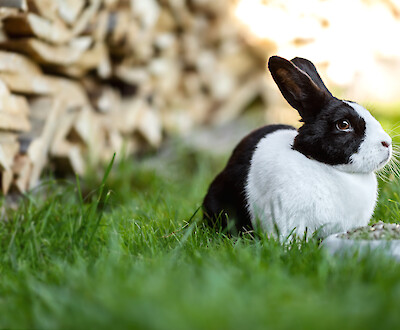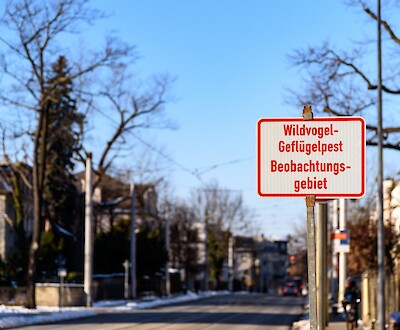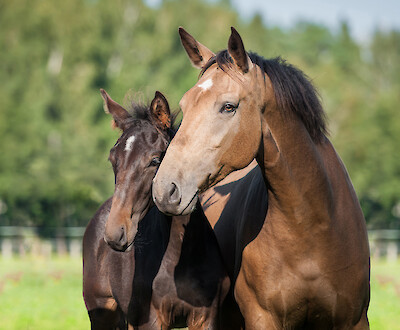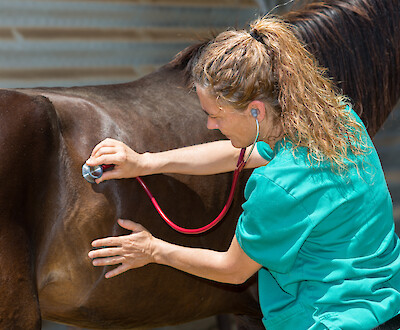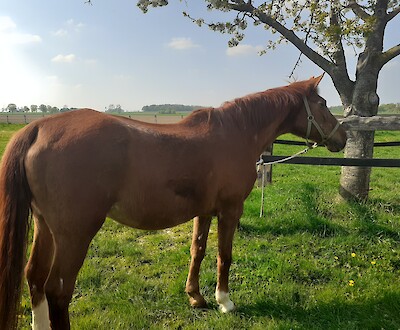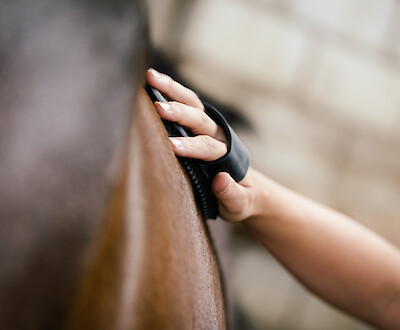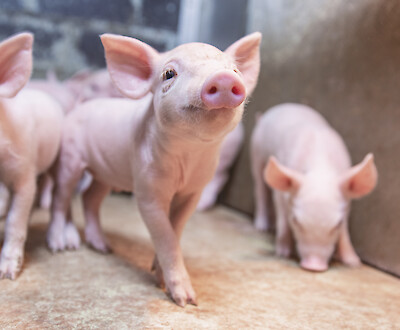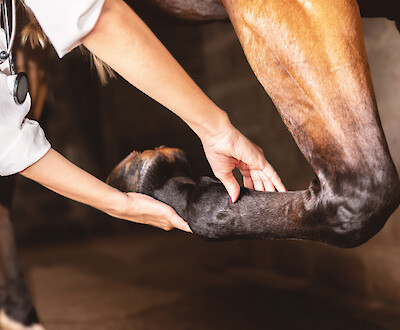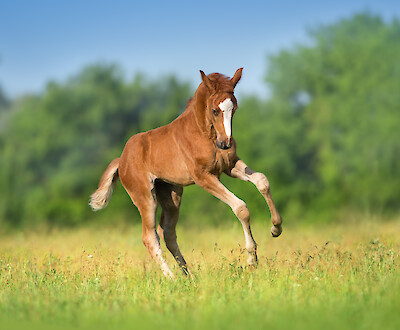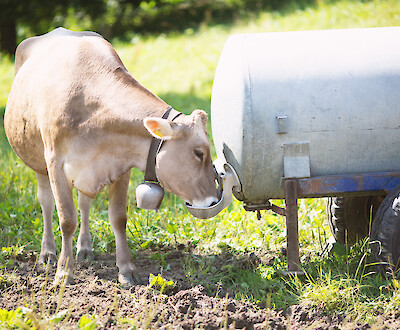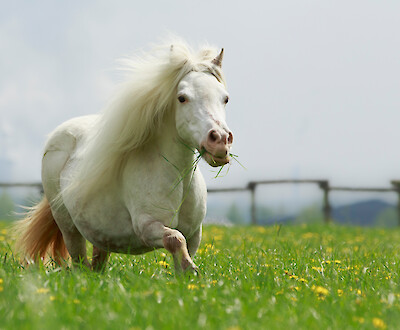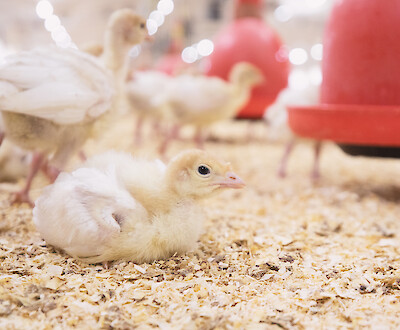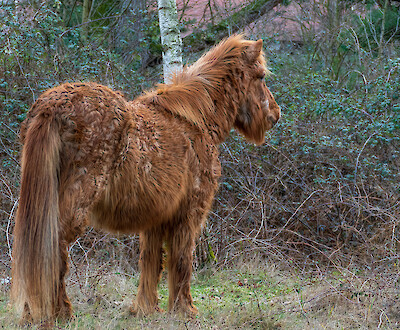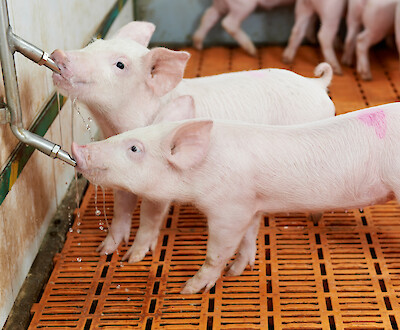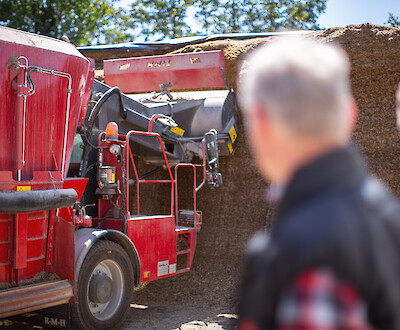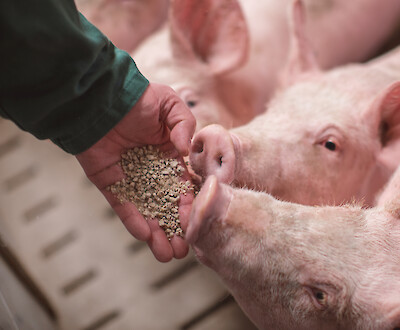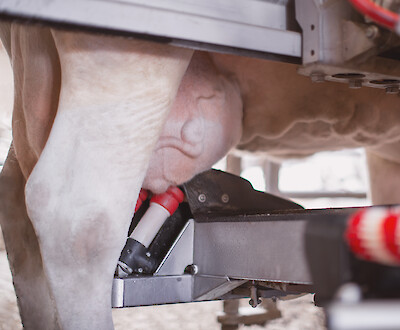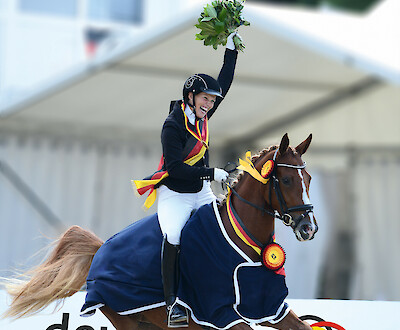My mobile chicken stable - Part 3: Feeding
How do I feed laying hens in the mobile stable correctly?
For the overall concept of mobile poultry farming, the right feeding is of crucial importance. This is primarily a matter of the quality and ingredients of the feed. But also the feeding times, the structure of the feed and ultimately the right feeding strategy are important for successful mobile housing. In the following article, you will learn everything you need to know about optimal feeding and feed management in your mobile chicken stable.
Feed management during the acclimatization phase of the chickens to the mobile stable
The acclimation phase sets the stage for a successful laying period. Mistakes in feeding and management can have a long-lasting effect. Therefore, fresh feed and water should be immediately available when the chickens are housed. Hang feed troughs lower in the first days to ensure that the pullets find the feed immediately. In order to spare the birds a stressful feed changeover parallel to housing, initially feed only pullets feed - ideally without coccidiostats, as the use of coccidiostats is only permitted up to the 16th week of life.
In addition, owners of mobile hen stables should avoid changing the feed type during the first weeks. Since rearing farms usually feed feed in meal form, the pullet feed should have the same structure during the acclimatization phase. In this way, the pullet can optimally get used to the new housing environment and get to know all functional areas without having to get used to a different feed structure at the same time.
- You can learn more about proper management during the acclimation phase in the second part "Management" of our series "My mobile chicken stable".
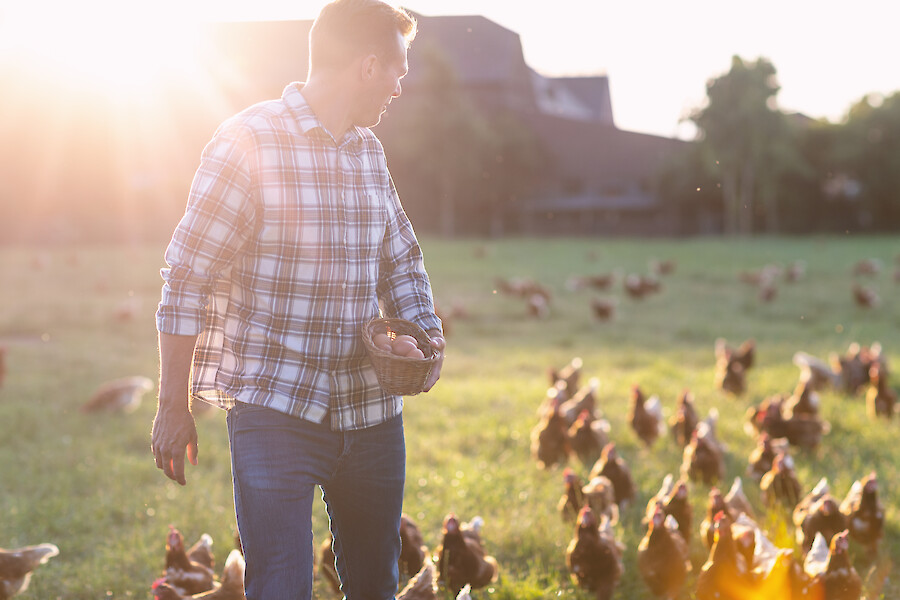
Feeding times: Particularly important in mobile housing
Chickens in mobile poultry management accept the outdoors much more than laying hens in conventional free-range systems. Sometimes the entire flock spends its time outdoors. The animals also make more intensive use of the outdoor run: it is not uncommon for the animals to spend the entire day outdoors.
In the meantime, the chickens do not eat nutrient-rich complete feed. Instead, they mainly peck grass. Therefore, it is important that your laying hens have already consumed just under 60-70% of the daily amount of feed in the morning hours and until after egg laying, and only then are they allowed to go outdoors. In mobile poultry houses with automatic feeding, the feed chain should already run the first time during dawn. Adjust the speed and run time so that the birds find full troughs at dawn. In mobile stables with round troughs, it is possible to fill the troughs during the evening hours so that the chickens can start feeding directly the next morning.
A second feeding can then take place at intervals of about three hours, but at the latest one hour before the flaps open. Additional running of the feed chain shortly after the first feeding is also useful: this "block feeding" ensures adequate feed intake by the lower-ranking birds.
It is important to choose feeding times so that chickens are not attracted out of nests during egg laying. This can encourage egg laying. Consider this issue already in the acclimation phase of the pullets.
Feeding strategies for mobile chicken stables
An optimal feeding strategy for the mobile house ensures that the laying hens are supplied according to their needs from the day they are brought into the house. Specific needs vary depending on the age and performance of the hens. This should also be reflected in the feeding:
The aim of feeding pullets is to promote a good constitution. For pullets under 18 weeks, a pullet feed without coccidiostat (e.g. deuka all-mash R without Cocc.) is therefore suitable. By feeding a feed for pullets during the acclimatization phase, you also avoid an unnecessary - and for the birds sometimes stressful - change of feed. To get a good overview of the weight development, check the live weight of the young hens regularly. A too early start of laying - induced by a nutrient-rich layer feed - reduces the growth of the pullets. This must be avoided, as the lack of body mass has a negative effect on egg numbers, especially at an older age. In this way, you invest in your flock in the long term.
From about the 20th week of life, feeding should begin with a laying hen feed. To avoid creating stress by changing feed too much, initially mix the coccidiostat-free pullet feed 1:1 with the layer feed. Blending allows the young hens to become accustomed to the high calcium content required in layer feeds (e.g., deuka NG Mobilstallfutter). If this blending phase is skipped and the laying hen feed is fed directly, there is a risk of a reduction in feed intake due to the higher calcium content. This can delay the start of laying. It is usually sufficient to feed a total of about 500 g per bird of this blended mixture. Even if the hens are already starting to lay, you can use up the mixture. Feed with laying hen feed afterwards.
Make sure that the chickens completely empty the troughs at least once a week (preferably even daily). In this way, you counteract selective eating and guarantee that the chickens also absorb all the fine components of the feed. In this way, you ensure a full nutrient intake.
As laying hens get older, they find it increasingly difficult to digest calcium. It is therefore advantageous to offer coarse feed lime or mussel shells in addition to the feed in the last third of the laying period. In this way, good shell quality is maintained for longer.
Bagged or loose - when and how to feed?
You can find out more about this in the first part of our series on the mobile stable.
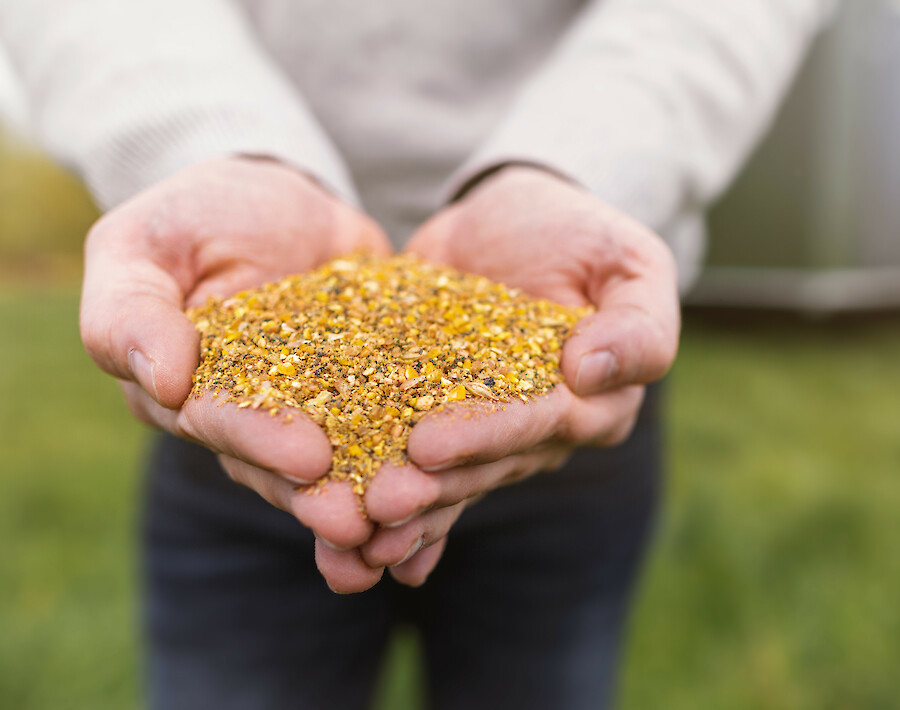
Optimal properties of a feed for the mobile poultry stable
Chickens in mobile poultry farming require a feed that is particularly rich in nutrients. The reason: the hens spend a large part of the day outside the mobile stable. The main feeding, which ensures the supply of the birds throughout the day, must therefore take place before they are let out into the open. Here, feeding with a mobile stable feed that has 11.6 megajoules (MJ)/kilogram (kg) of energy and a protein content of about 17.5% is a good choice. Such mobile stable feeds (e.g. deuka NG Mobilstallfutter) are designed in such a way that one feed type can be fed throughout the entire laying phase and ensures the supply of the animals.
In addition to the nutrients contained in the feed, the structure of the feed also plays a major role. From a digestive point of view, meal-based feeds are advantageous. Make sure that the structure of the feed is always homogeneous and neither too coarse nor too fine. Homogeneity reduces selective eating. Due to the nature of the raw materials (e.g. wheat or corn) or ingredients (minerals and vitamins) in layer feeds, fines cannot be completely avoided.
Conclusion
- The first few weeks are especially important for acclimating pullets to the mobile stable. During this time, get them used to life in the stable, feeding times, and start laying eggs.
- Avoid abrupt feed changes. Initially feed a pullet feed without a coccidiostat (e.g. deuka all-mash R without Cocc.) when the birds are housed.
- From the 19th week of life, feed a laying hen feed (e.g. deuka NG Mobilstallfutter) with a high nutrient density, sufficient calcium, energy (11.6 MJ/kg) and a high protein content (17.5%).
- When changing feed between the 18th and 19th week of life, make sure that both feeds are mixed.
- The structure of the meal feed is ideally homogeneous and neither too coarse nor too fine.
- Feeding management is important. For example, the animals should have feed available in the chain or troughs before going outside. The trough should be eaten completely daily to weekly.
Further links
- German website of the Bundesverband Mobiler Geflügelhalter e. V. (BVMG) - Europe's first and only mobile poultry stable association.

